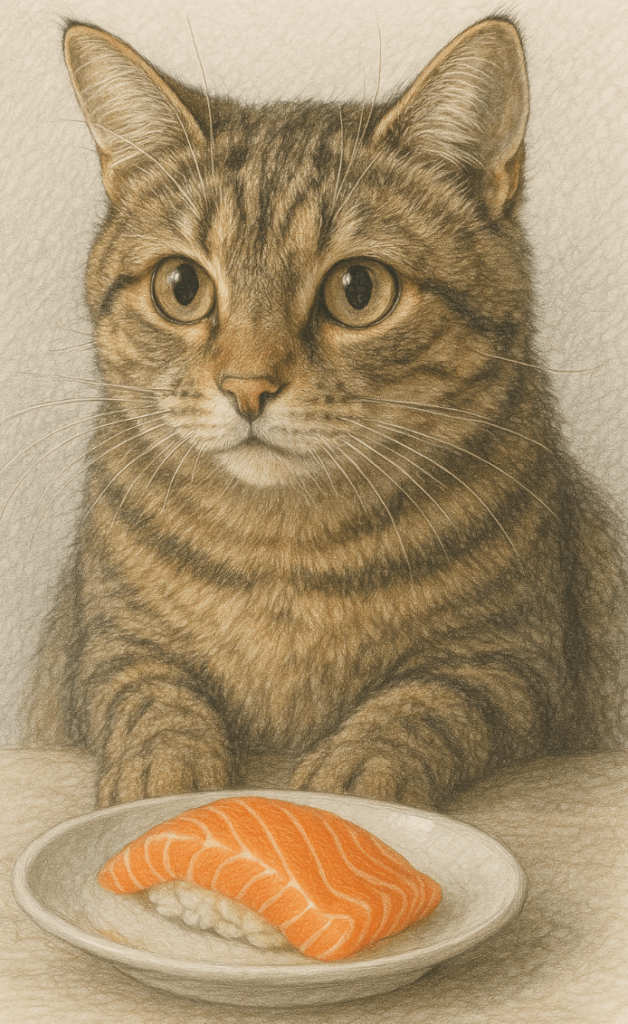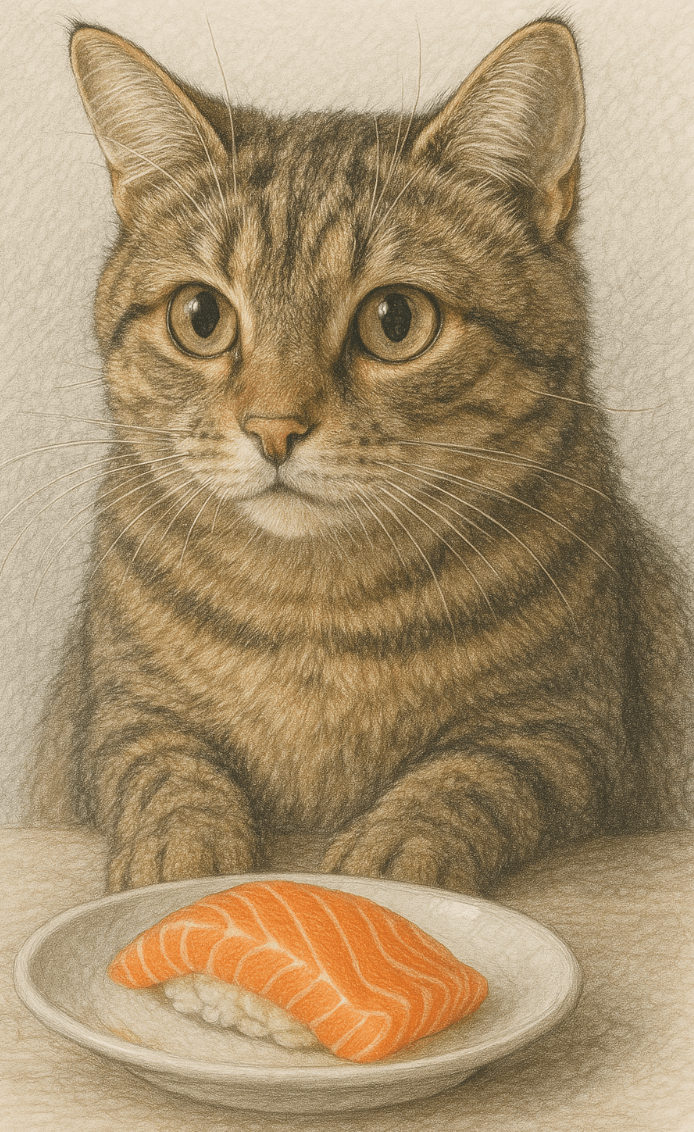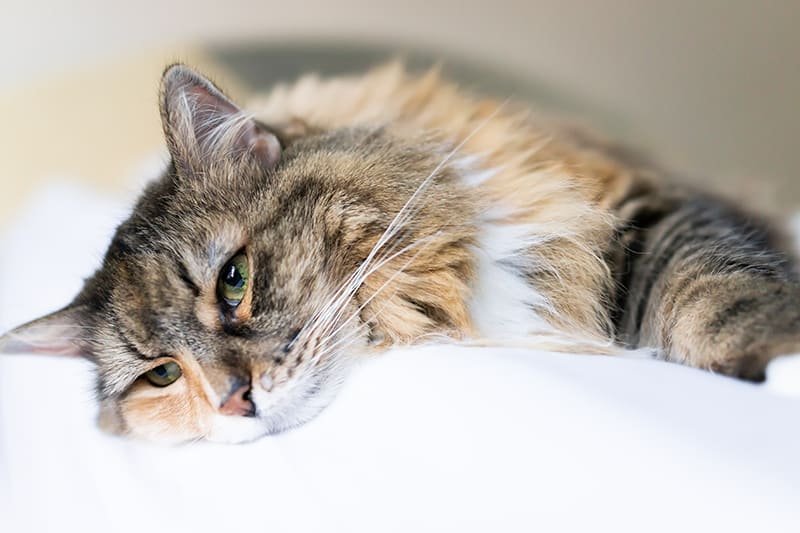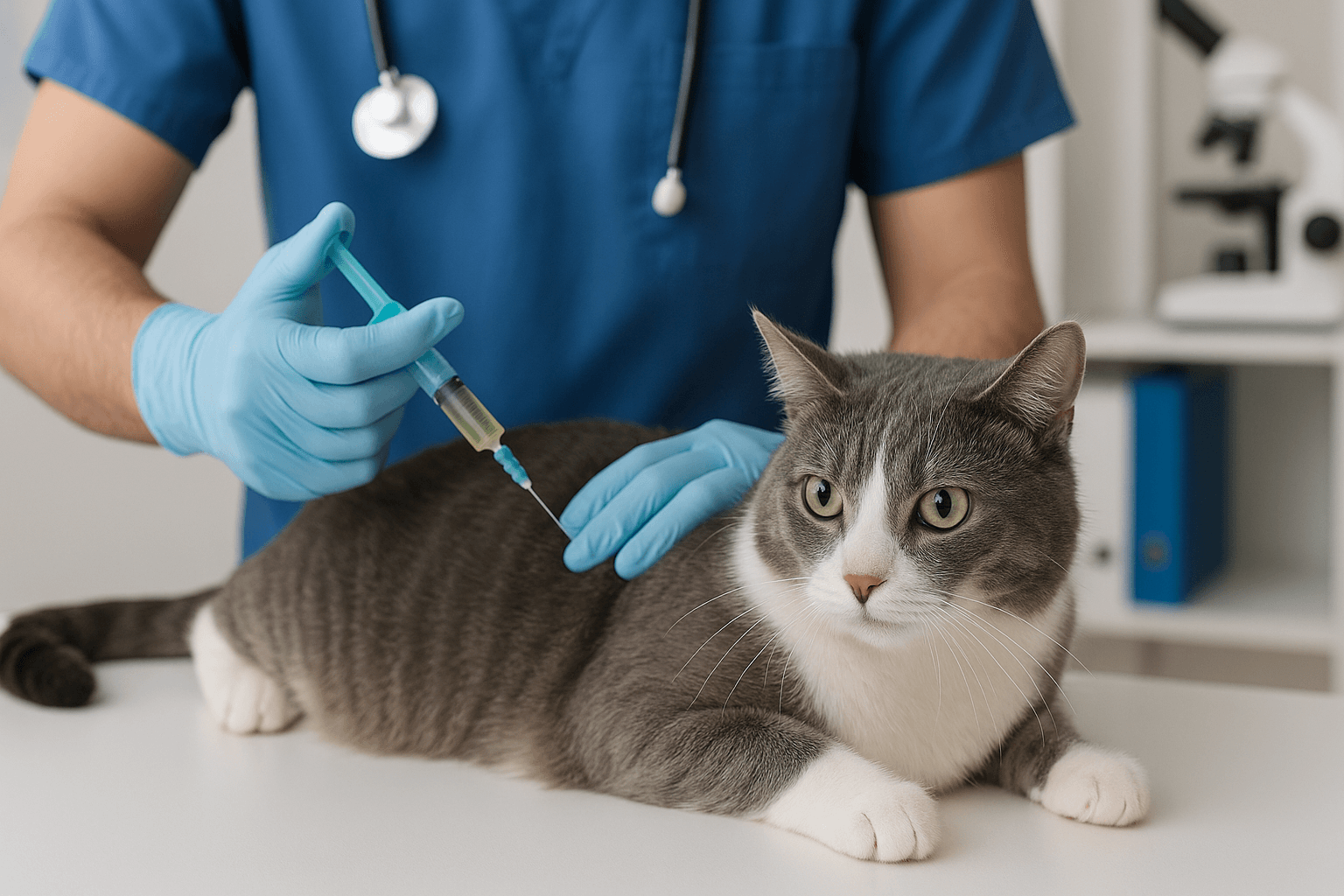Can Cats Eat Sashimi?
Cats are natural carnivores, and their love for fish is no secret. But when it comes to feeding them sashimi—a raw delicacy often enjoyed by humans—pet owners may wonder if it’s safe or even beneficial for their feline friends. While cats can eat some types of raw fish in moderation, there are important considerations to keep in mind before sharing your sushi platter with your cat. In this blog post, we’ll explore the potential risks and benefits of feeding sashimi to cats, offer expert tips on how to do so safely, and provide alternatives that cater to your cat’s dietary needs. Let’s dive into everything you need to know about cats and sashimi.
Potential Risks of Feeding Sashimi to Cats
While sashimi might seem like a healthy treat for your cat, it’s essential to be aware of the risks involved. Raw fish, especially when prepared for human consumption, can pose several hazards to your feline companion.
Bacterial Contamination:
Raw fish may contain harmful bacteria like Salmonella or E. coli, which can cause gastrointestinal issues in cats.Parasites:
Fish used for sashimi can harbor parasites such as roundworms or tapeworms, which may infect your cat if ingested.Thiamine Deficiency:
Certain types of raw fish contain enzymes that break down thiamine (vitamin B1), leading to deficiencies that affect your cat’s nervous system.High Sodium Content:
Sashimi prepared for humans often contains added salt or seasoning, which can be harmful to cats’ kidneys and overall health.Choking Hazards:
Large pieces of raw fish or bones can pose choking risks, especially for smaller or more aggressive eaters.
These risks highlight why caution is crucial when considering sashimi as a treat for your cat. Always prioritize their safety over indulgence.
Benefits of Sashimi for Cats (When Given Safely)
Despite the risks, sashimi can offer certain nutritional benefits for cats when prepared and served appropriately. These advantages make it an occasional treat worth considering under the right circumstances.
High-Quality Protein:
Fish like salmon or tuna are rich in protein, which supports muscle development and overall energy levels in cats.Omega-3 Fatty Acids:
Sashimi-grade fish contains omega-3 fatty acids, which promote healthy skin, a shiny coat, and reduced inflammation.Low Fat Content:
Many types of sashimi are lean, making them a healthier alternative to fatty meats or processed treats.Hydration Boost:
The moisture content in raw fish can help keep your cat hydrated, especially if they don’t drink enough water.Mental Stimulation:
Offering small amounts of sashimi as an occasional treat can satisfy your cat’s curiosity and provide enrichment.
While these benefits exist, they must be weighed against the potential dangers to determine if sashimi is truly suitable for your cat.
Check this guide 👉Can Cats Eat Clams? Best 7 Expert Tips!
Check this guide 👉Can Cats Eat Radishes? Best 7 Expert Tips!
Check this guide 👉Can Cats Eat Pomegranate? Best 7 Expert Tips!

Safe Alternatives to Sashimi | Risks of Unsafe Fish Choices |
|---|---|
Cooked, boneless fish (plain) | Raw fish with visible parasites |
Commercial cat food with fish flavors | Fish seasoned with salt or spices |
Freeze-dried fish treats for cats | Large fish bones or sharp fragments |
Small portions of boiled salmon | Fish high in mercury (e.g., swordfish) |
Hydrated fish-based kibble | Cheap fish with poor quality sourcing |
How to Safely Introduce Sashimi to Your Cat
If you decide to give your cat sashimi, it’s essential to take precautions to minimize risks. Follow these guidelines to ensure a safe experience.
Choose Sashimi-Grade Fish Only:
Opt for high-quality, fresh fish specifically labeled as sashimi-grade to reduce the risk of contamination.Avoid Seasonings or Additives:
Ensure the fish is plain, without salt, soy sauce, wasabi, or other seasonings that could harm your cat.Serve in Small Portions:
Limit the amount of sashimi to a bite-sized piece or two, avoiding overfeeding or upsetting their stomach.Monitor for Reactions:
Watch for signs of digestive upset, allergic reactions, or discomfort after introducing sashimi.Consult Your Veterinarian:
Before offering sashimi, seek advice from your vet to ensure it aligns with your cat’s specific dietary needs.
By following these steps, you can mitigate risks while allowing your cat to enjoy the occasional sashimi treat.
Signs Your Cat May Be Struggling After Eating Sashimi
Even with precautions, complications can arise if your cat consumes sashimi improperly. Watch for these warning signs to act quickly if something goes wrong.
Vomiting or Diarrhea:
These symptoms may indicate food poisoning or an intolerance to raw fish.Lethargy or Weakness:
A sudden lack of energy could signal thiamine deficiency or another health issue caused by consuming raw fish.Loss of Appetite:
If your cat refuses to eat after trying sashimi, it may be experiencing digestive distress or illness.Excessive Drooling:
Drooling could indicate nausea or irritation caused by bacteria or toxins in the fish.Difficulty Walking or Seizures:
These severe symptoms may suggest neurological problems linked to thiamine deficiency or bacterial infection.
Recognizing these signs early allows you to seek veterinary care promptly, preventing further complications.
Common Mistakes to Avoid When Feeding Sashimi to Cats
Feeding sashimi to your cat requires careful consideration to avoid mistakes that could endanger their health. Here are some pitfalls to watch out for.
Offering Seasoned Fish:
Salt, soy sauce, or spices can harm your cat’s kidneys and digestive system. Always serve plain fish only.Ignoring Quality Standards:
Using low-quality or non-sashimi-grade fish increases the risk of bacterial or parasitic infections.Feeding Too Frequently:
Overfeeding sashimi can lead to nutritional imbalances or excessive mercury exposure. Stick to rare treats.Leaving Bones in the Fish:
Small bones can cause choking or damage your cat’s throat and digestive tract. Remove all bones carefully.Neglecting Veterinary Advice:
Skipping a professional opinion can result in unknowingly harming your cat with inappropriate food choices.
Avoiding these mistakes ensures a safer and healthier experience for your cat.
Alternatives That Mimic the Benefits of Sashimi
If you’re hesitant about feeding sashimi, there are plenty of alternatives that mimic its benefits without the associated risks.
Cooked Fish Treats:
Plain, cooked salmon or tuna provides similar nutrients without the dangers of raw fish.Freeze-Dried Fish Snacks:
Specially formulated freeze-dried treats retain the flavor and nutrients of fish while being safe for cats.Fish-Based Wet Food:
High-quality wet cat food made with fish offers hydration and essential fatty acids in a balanced form.Homemade Fish Broth:
Strained, unsalted broth made from fish can add flavor and moisture to your cat’s regular meals.Edible Fish Toys:
Some chewable toys are infused with fish flavors, providing enrichment and satisfying cravings safely.
These alternatives allow you to cater to your cat’s instincts while keeping them safe.
Understanding Your Cat’s Natural Instincts Around Fish
Cats are naturally drawn to fish because of their evolutionary history as hunters. Understanding their instincts helps explain their fascination.
Hunting Behavior:
Wild cats often consume small fish, making domestic cats instinctively curious about seafood.Nutrient Seeking:
Cats crave omega-3 fatty acids and protein found in fish, which are essential for their growth and vitality.Taste Preferences:
The strong smell and taste of fish appeal to cats’ heightened senses, making it irresistible to many.Playful Exploration:
Cats use their paws and mouths to explore new textures, and fish provides an intriguing sensory experience.Territorial Marking:
Chewing and gnawing on objects like fish toys can serve as a way for cats to assert ownership or relieve stress.
By recognizing these behaviors, you can better address your cat’s needs in a safe and controlled manner.
Frequently Asked Questions About Cats and Sashimi
Is raw fish safe for cats?
Raw fish can be safe in small amounts if it’s fresh, high-quality, and free of contaminants, but it’s not recommended as a regular part of their diet.
What type of fish is best for cats?
Cooked salmon, tuna, or whitefish are generally safe options when prepared without seasoning or bones.
Can kittens eat sashimi?
Kittens should avoid sashimi entirely due to their developing immune systems, which are more vulnerable to bacteria and parasites.
How often can I give my cat sashimi?
Limit sashimi to an occasional treat once every few weeks to avoid nutritional imbalances or health risks.
What should I do if my cat eats spoiled fish?
Contact your veterinarian immediately to assess the situation and prevent potential complications.
Prioritizing Your Cat’s Health When Offering Sashimi
Feeding sashimi to your cat can be a double-edged sword, offering both nutritional benefits and potential risks. While high-quality, plain fish can provide protein and omega-3 fatty acids, raw fish also poses dangers like bacterial contamination and thiamine deficiency. By understanding the dos and don’ts of feeding sashimi, choosing safer alternatives, and consulting your veterinarian, you can ensure your cat stays healthy and happy. Remember, your feline friend relies on you to make the best dietary choices for them—so always prioritize their well-being above all else.
Is the Rubber Tree Cat Safe? Best 7 Expert Tips! Discover expert advice on keeping rubber plants safely in cat-friendly homes and learn top tips for pet-safe plant care.
Low Red Blood Cell Count in Cats: Best 7 Expert Tips! Discover causes, symptoms, and treatment options for feline anemia. Learn how to support your cat’s health effectively with expert advice.
Understanding Megacolon Treatment: Best 7 Expert Tips! Discover effective strategies to manage feline megacolon, from dietary changes to surgical options, ensuring your cat’s comfort and long-term health.
How to Register a Therapy Cat: Best 7 Expert Tips! Discover essential steps to certify your cat as a therapy animal, prepare them for training, and make a meaningful impact in therapeutic settings.





